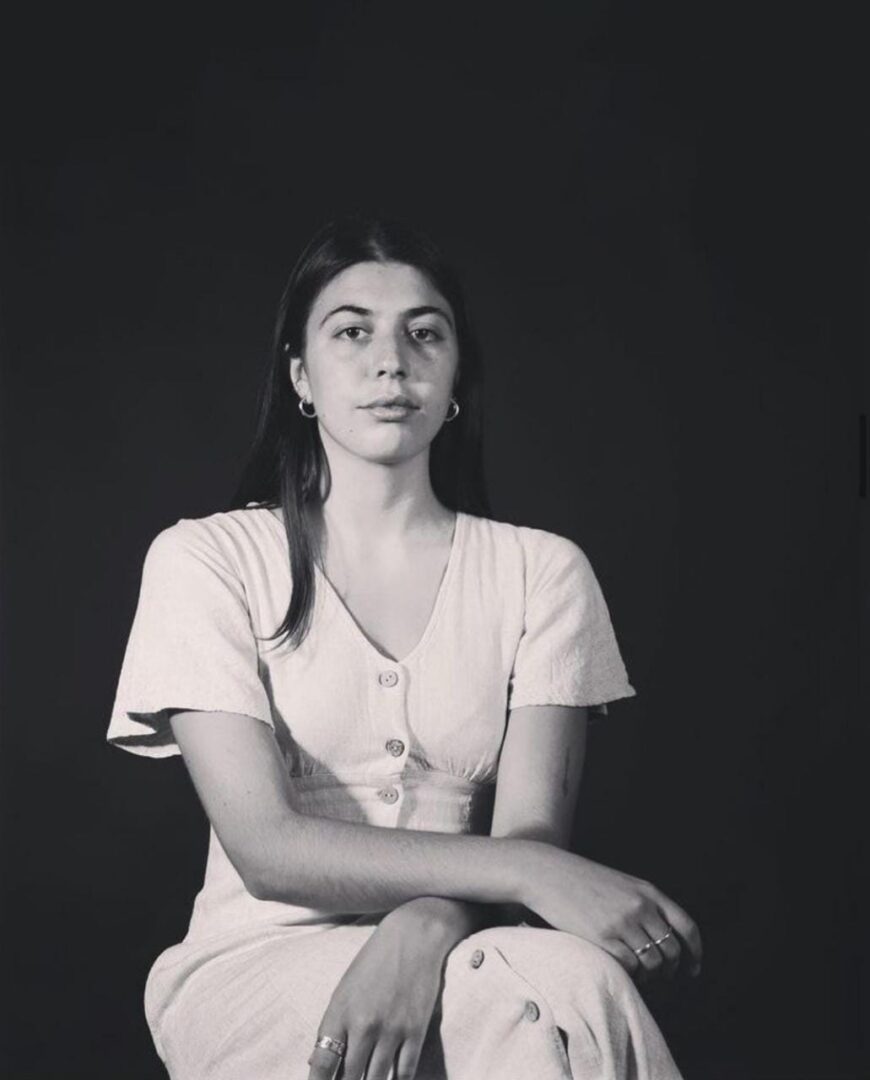”
Written byAlice Viskat
“I don’t know who I am. What I do know is that I am in love with the forest and I always want to be in the forest – indigenous forests though.”
Growing up in the tranquil town of George, swelling with lush flora, her work is first and foremost a homage to nature. She’s even incorporated many a tattooed fern and dragonfly onto her skin, such is her commitment to showcasing its beauty.
“The forests in the Garden Route have always provided me with a safe space and a space of connection, not only with nature but with myself. Being exposed to that as a little girl, running around barefoot, climbing trees, that’s shaped absolutely everything. We had a massive oak tree that was over 300 years old in our garden and whenever I was going through something I would sit under the tree and it would calm me down. Also, my parents are obsessed with trees and have taught me their scientific names since as long as I can remember.”
“My gut knew I was going to be an artist and there was nothing else.”
She started studying Fine Art at Michaelis in 2017 where she is now completing her Masters. It was there where she fell in love with photography. “The reason I love photography so much is because it allows me to move around a lot and be outside. I hate being inside! So it was like combining my favourite things.”
“My work is a reflective process. I’m making it for myself as well. My previous body of work, Estranged, was about the human-nature divide but at the same time it interrogated my own estrangement from nature even though I am trying everything that I can to reconnect to it.”
“My research extends from colonial studies in the South African context, general environmental and social history and how they intersect in South Africa, environmental science and visual research. That’s what goes into it but in essence, I’m not a scientist, I’m not a historian, I’m an artist. That’s what all artists do though, in a sense.”
“I’m not a scientist, I’m not a historian, I’m an artist. That’s what all artists do though, in a sense.”
Her photographs offer a lens into the indigenous forests, untouched and in their purest form. One feels almost as though they’ve caught nature unawares. Although it is a mere snapshot of a moment in time, you can almost see the ferns gently unfurling, quivering slightly in the breeze. The sunlight bounces playfully from leaf to leaf of a giant yellowwood. You feel the forest’s dampness on your arms and you can suddenly breathe much more deeply. The illusion is ruined, however, because the photographs are segmented and crudely stitched back together in an anatomically-mismatched way. It makes one suddenly yearn to walk barefoot in an actual forest, to re-experience that brief moment without human interference.
“Someone once asked me if I have an issue with who buys my art and generally I don’t care as long as someone can look at it and think ‘wow, this forest is so beautiful’ and have an appreciation for nature in its purest form. I want my work to reconnect people with nature and re-evaluate their relationship to it.”
“My work is black and white because it’s very hard to develop colour film and I’m very anal about my process. No one else is allowed to touch my work until it’s complete. I shoot, develop and print it all myself, I don’t let it leave my hands until it’s a piece. It’s partly about accessibility but also black and white photography has a historic quality to it and I’m interested in looking at the forest through a historic lens. That’s why I also use very old mechanical cameras, imagining what it might’ve been earlier. Also, I want to shift and unsettle the grounds of what nature is and looking at nature in black and white is the most unnatural thing to do. I want people to question and think and wonder and maybe not necessarily have an answer but at least there’s some thought.”
Her work can be found on her Instagram page @emmepstudio and online at: www.michaelis.uct.ac.za/emme-pretorius
Want to see your own feature up here alongside Emme Pretorius? Follow these simple steps.





